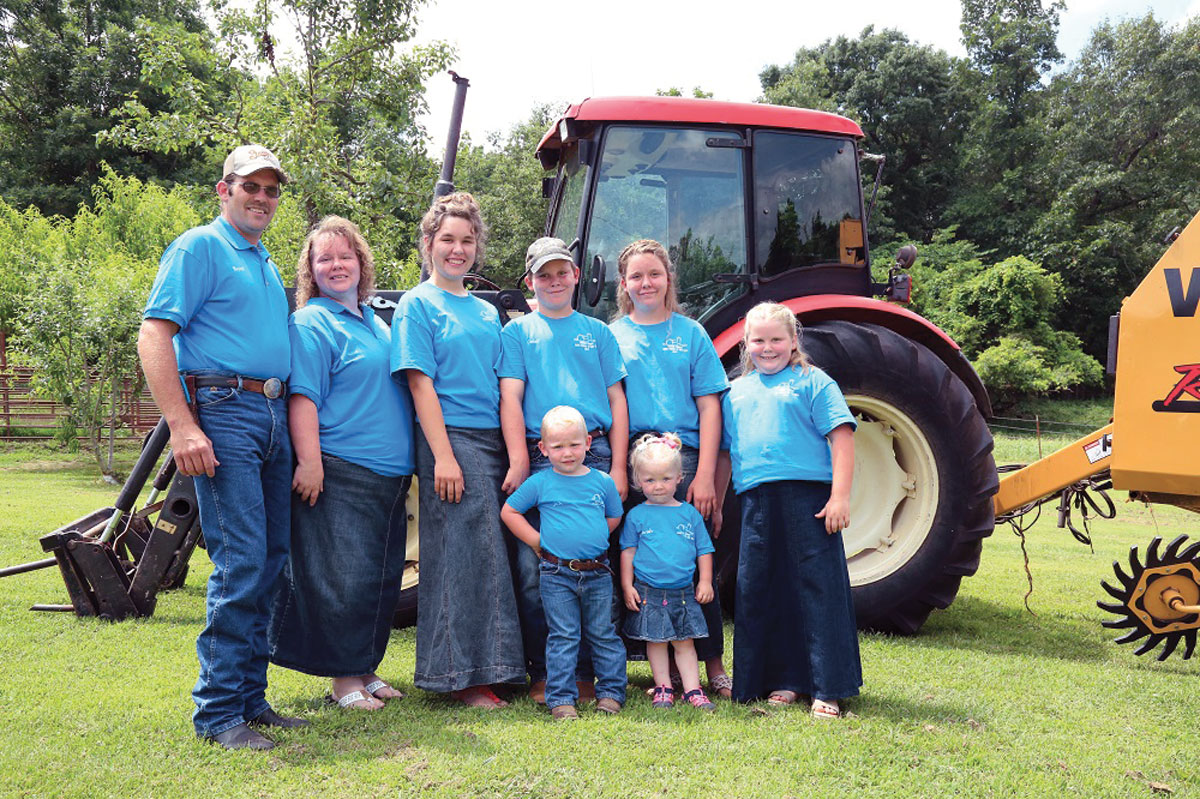
Like so many farmers in Arkansas, Jimmy and Janelle Brown of Natural Dam, Ark., live on a generational farm, in this case five generations. They own and lease just under 1,000 acres and run a full-time commercial cattle operation. Jimmy said, “For us, having land off the highway is as important as having better land.”
Jimmy loved rodeoing, but when he got hurt and could no longer compete, the couple started raising bucking bulls in addition to their small commercial herd. They also ran a local rodeo where kids could practice their skills. The Browns sold their bucking bull operation to Rafter H Ranch after 16 years of raising high-quality bulls; five of those were selected for national and premier competitions. One named Chocolate Chip was successfully ridden only three times in eight years. Jimmy believes the secret to their success was raising predominantly Brahman bulls using crossbred cows.
Through experimentation, the couple learned that Charolais and Hereford were the preferred momma crosses because a Brahman and Angus mix seemed to produce temperament issues. When changing over to an exclusively commercial herd, the Brahman, Charolais and Hereford cross produced larger, better growing calves that weighed as much as 150 pounds more at weaning than traditional commercial cattle, due in part to the rich milk the mix produced. The calves usually weigh at least 100 pounds at birth (topping out last year at 134 pounds), twice the size of typical black ones. Not surprisingly, there is a trade-off: larger calves mean birthing issues. However, those issues are a matter of course for the Browns who successfully pulled 31 calves last year and who have a special chute for helping a momma who is having difficulties. To ensure animal health, Jimmy and Janelle visually check all mommas during calving season every two hours. Jimmy grinned and said, “It seems like we sleep with them.”
When the Browns transitioned to a solely commercial cattle herd, they had a few full-blood Brahman mommas and bought additional heifers. They have since grown their herd to 95 mommas and 20 replacement heifers from that original stock. The herd is serviced by four bulls, three Charolais and one Hereford. While they have raised a few of their own bulls, they keep meticulous, hand-written records to prevent genetic issues such as poorly growing calves. The Browns are currently experimenting to get a cream colored, white-faced calf using a momma that is one-quarter Brahman and three-quarter Hereford with a Charolais bull. Calves are sold at weaning at about six months. A replacement heifer is administered a brucellosis vaccination, which lasts throughout her reproductive years. Jimmy explained that at one time Arkansas cattle were downgraded due to brucellosis issues and that the government developed and provides this important vaccine which must be administered before a heifer is 1-year-old.
While bulls receive grain, mommas and calves receive no grain and therefore require top-quality hay and pasture. The Browns ensure this by raising hay and caring for pastures themselves. One of their practices is not totally drying hay before harvesting. Janelle said, “The hay needs some green on it. That way you get all of the seed which has higher protein content and which then comes up again the next year.” The Browns prefer Big Red Clover because they get more cuttings than with White. Jimmy added, “We also have a natural clover called Yellow Hop that will reseed if you cut it at the right time. To prevent intestinal issues with the calves, the Browns alternate Red Clover laden hay with pasture. The Browns only fertilize with cattle litter. Jimmy said, “Last year we got 45 round bales on 6.2 acres just from cow litter.” Finally the Browns will no-till drill to aerate the soil if reseeding becomes necessary.
Feral hogs are a serious problem in the area that the Browns deal with systematically and efficiently. If a field has been rooted up by hogs, the Browns turn the cows on it who subsequently smooth out the ruts as they consume hay bales rolled out on the afflicted land. Later the Browns drag tires over the ground to break up the cow manure and finished the smoothing process.
The Browns are passionate about what they do and hope to light a fire in their grandchildren for perfection, profitability and hard work. Their son, Tim, and his wife, Carol, have two children, Hannah and Kaylor, while their daughter, Nancy, and husband, Doug, have three children, Hunter and twins, Sarah and Emily.







